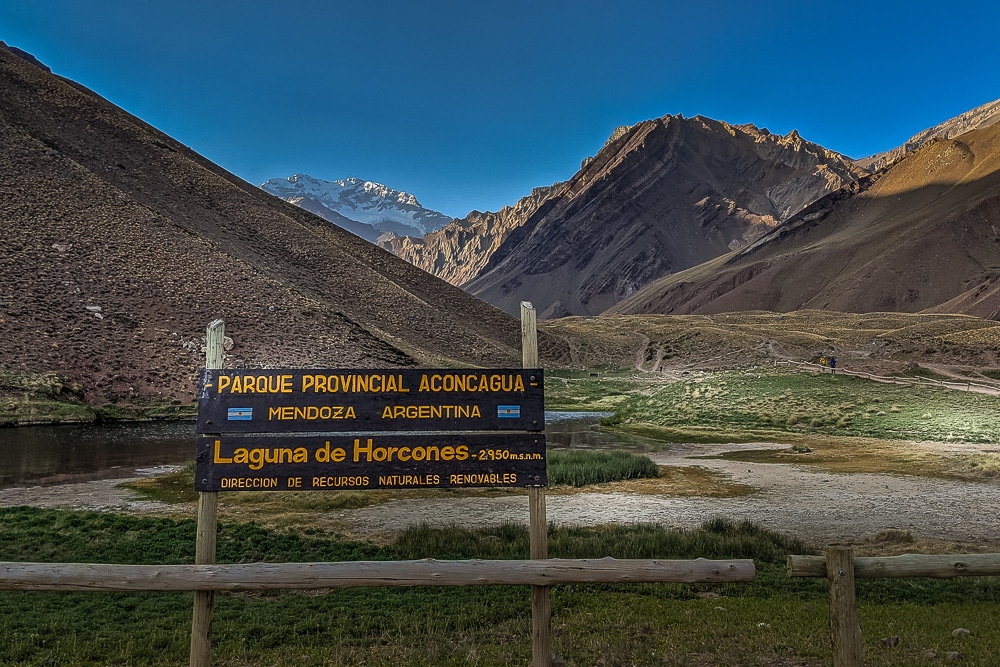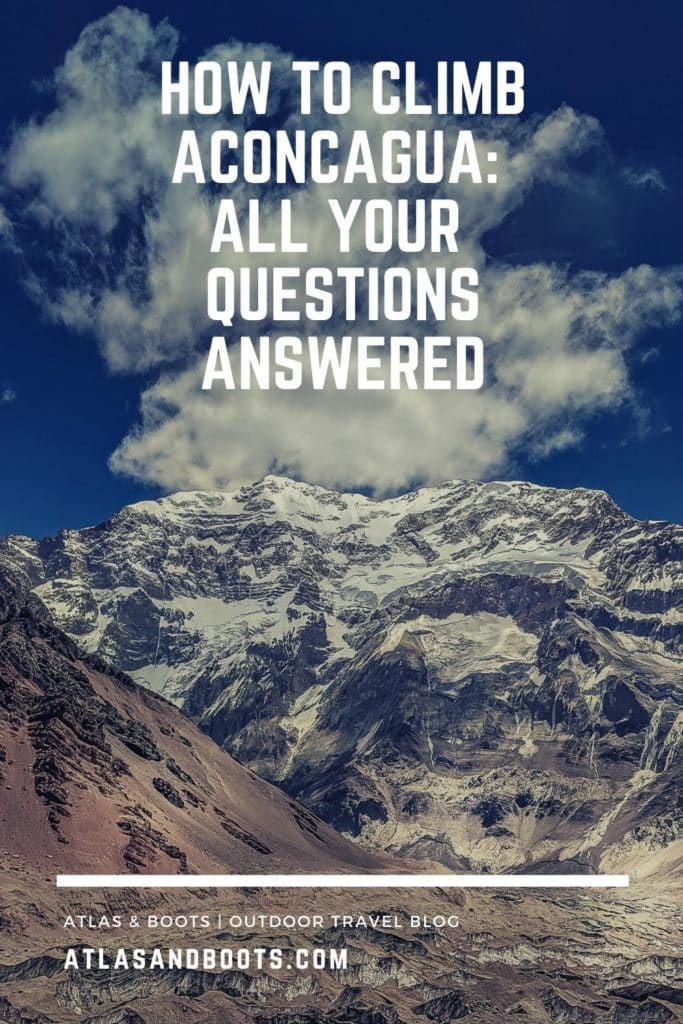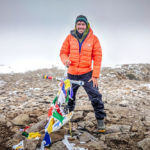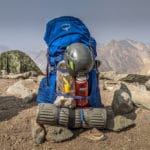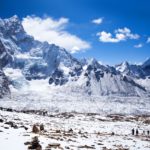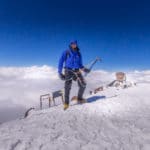Our Q&A-style tips on how to climb Aconcagua, assembled from the many questions asked by our followers
I didn’t announce I was climbing Aconcagua on social media until the day I left for Argentina. It was part superstition (I didn’t want to jinx the climb), but more importantly, I knew that I was about to embark on the hardest and highest climb of my life.
It was a very real possibility that I would not make the summit. Weather, altitude and exhaustion all stood in the way of success. I didn’t want to make a big deal about it only to later admit that I failed.
As such, I only sent one or two brief updates when I arrived in Mendoza and then went silent once I began the climb.
When it was all over and I was back in civilisation, I announced the climb across our social channels, first with my summit photo and then a volley of updates from the previous two weeks of trekking and climbing.
I was immediately inundated with congratulatory messages, followed by a barrage of questions about the experience via email and social media.
I’ve collated them all below in a detailed Q&A that includes all my tips on how to climb Aconcagua.
Climbing Aconcagua: my third seven summit
Aconcagua gear list
Climbing the seven summits: a route to the top
24 interesting facts about Aconcagua
Argentina’s best hiking destinations
How high is Aconcagua?
The majority of literature on Aconcagua puts the height at 6,962m (22,840ft). This is based on a 2001 survey by an Italian-Argentinian team that put the mountain at 6,961.83m.
However, in 2012, a team of scientists from various academic institutions in Mendoza re-surveyed Aconcagua and came up with 6,960.8m (6,981m/22,837ft). Even though this is the most recent measurement, it is not widely used.
Did you climb Aconcagua with a guide?
Yes, I joined Acomara Aconcagua Expeditions on a guided climb via the ‘Normal Route’. Acomara has over 15 years of experience guiding on and climbing Aconcagua across more than 500 expeditions.
Can you climb Aconcagua unguided?
You can climb Aconcagua without a guide, but the vast majority of climbers do use guides. It significantly increases your chances of success. During the expedition, I met just three climbers who weren’t using guides. None of them summited.
Those who do climb independently will almost certainly make use of some of the logistical support at Confluencia and Plaza de Mulas camps. This may include porterage, food, accommodation and toilets.
How big was your group?
There were 12 climbers in our group. I climbed during the busiest time of the season (mid-December through January) so our group was full. We had two lead guides and then two assistant guides for the higher camps and summit day.
How many of your group made the summit?
Seven members of our team made the summit. One member was carrying an ongoing knee injury and had to descend from base camp. Another four members turned back on summit day.
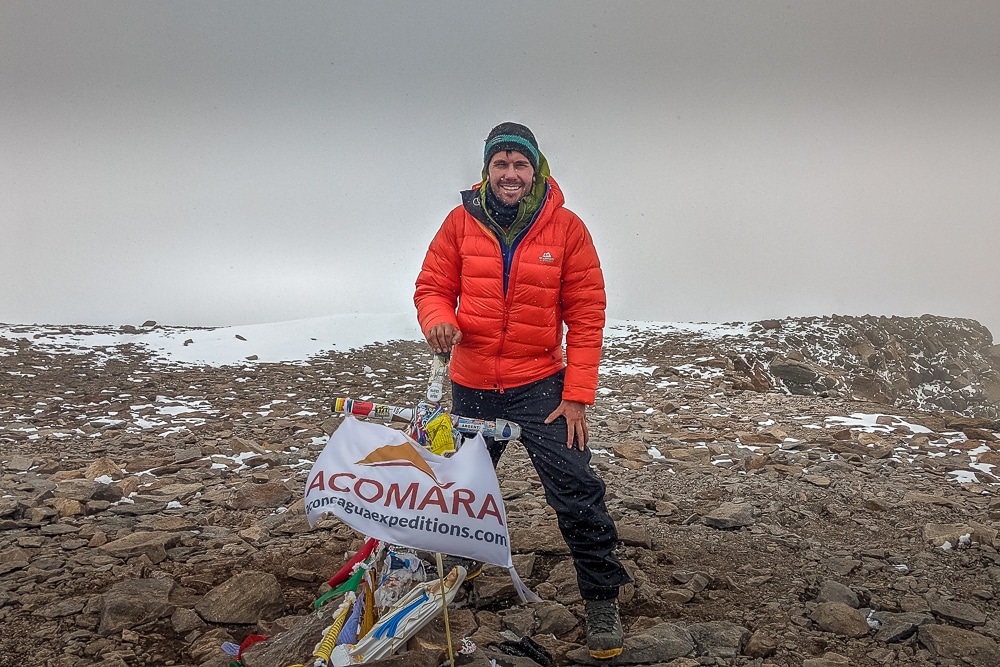
What is the summit success rate on Aconcagua?
There are no official statistics and park rangers do not maintain records, but estimates suggest a summit success rate of around 30-40% historically.
However, this has improved in recent years. Our freelance guides suggested that it is higher these days with around 70% of their clients reaching the summit. Overall, Acomara has an 80% summit success rate over the 15 years they’ve been guiding on Aconcagua.
Of our group, 58.3% (7/12) summited. It’s important that clients ensure they are fit and experienced before attempting this climb.
How long does it take to climb Aconcagua?
My itinerary was 18 days which included 14 days of climbing, a night at each end of the trip in Mendoza, one night in Los Penitentes and two additional days built in as reserves in case of bad weather.
The itinerary is below, although it comes with a degree of flexibility depending on conditions on the mountain. It includes two dedicated acclimatisation hikes and three rest days.
| Day | From/to | Duration | Altitude |
|---|---|---|---|
| 1 | Meet in Mendoza | N/A | 750m |
| 2 | Transfer to Penitentes | 3 hours | 2,725m |
| 3 | Trek to Confluencia Camp | 3 hours | 3,400m |
| 4 | Acclimatisation hike to Plaza Francia | 7-8 hours | 4,000m |
| 5 | Trek to base camp: Plaza de Mulas | 8-9 hours | 4,300m |
| 6 | Rest day at base camp: Plaza de Mulas | N/A | 4,300m |
| 7 | Acclimatisation hike to Mt. Bonete | 7-9 hours | 5,000m |
| 8 | Carry to Camp 1: Canadá, return to base camp | 4-6 hours | 4,900m |
| 9 | Rest day at base camp: Plaza de Mulas | N/A | 4,300m |
| 10 | Climb to Camp 1: Canadá | 3-4 hours | 4,900m |
| 11 | Climb and carry to Camp 2: Nido de Cóndores | 3-4 hours | 5,560m |
| 12 | Rest day at Camp 2: Nido de Cóndores | N/A | 5,560m |
| 13 | Climb and carry to Camp 3: Cólera | 3-4 hours | 6,000m |
| 14 | Summit day and return to Camp 3: Cólera | 12-15 hours | 6,961m |
| 15 | Descend to base camp: Plaza de Mulas | 4-6 hours | 4,300m |
| 16 | Trek out to Laguna de Horcones | 7-9 hours | 2,900m |
| 17-18 | Reserve days for summit | N/A | N/A |
It should also be noted that if the itinerary changes for any reason, then additional accommodation is not provided. We summited a day earlier than planned and financed the extra nights in the hotel in Mendoza at around $65 USD per night.
How much does it cost to climb Aconcagua?
Prices start from around $4,000 USD depending on dates and the itinerary for a round trip from Mendoza. The price includes all accommodation, meals on the trek, English-speaking guides and assistants, and porters to carry equipment between camps and ground transport.
There is also the climbing permit which currently costs between $730-$1,140 USD depending on the route and time of year. The current price list can be downloaded from the park’s website.
Including the cost of the permit, flights and additional accommodation, climbers should budget to spend upwards of $6,000 USD.
How hard is the climb?
Aconcagua is an extremely challenging mountain. I’ve said before and I’ll say it again: it was the highest and hardest climb I’ve completed. I would not recommend this as a first high-altitude trek or climb.
The main challenges are the altitude and the weather, both of which are amplified by the relative distance of Aconcagua from the equator. The further you travel from the equator, the thinner the Earth’s atmosphere becomes. As such, the effects of altitude are more extreme and the weather is more volatile.
Temperatures are severe, regularly dropping below -20°C (-4°F). The wind (and subsequent windchill) is relentless and even on the best days, the slopes are bleak, barren and harsh.
Underestimate Aconcagua at your peril. Many do and, as such, repeat visits are common.
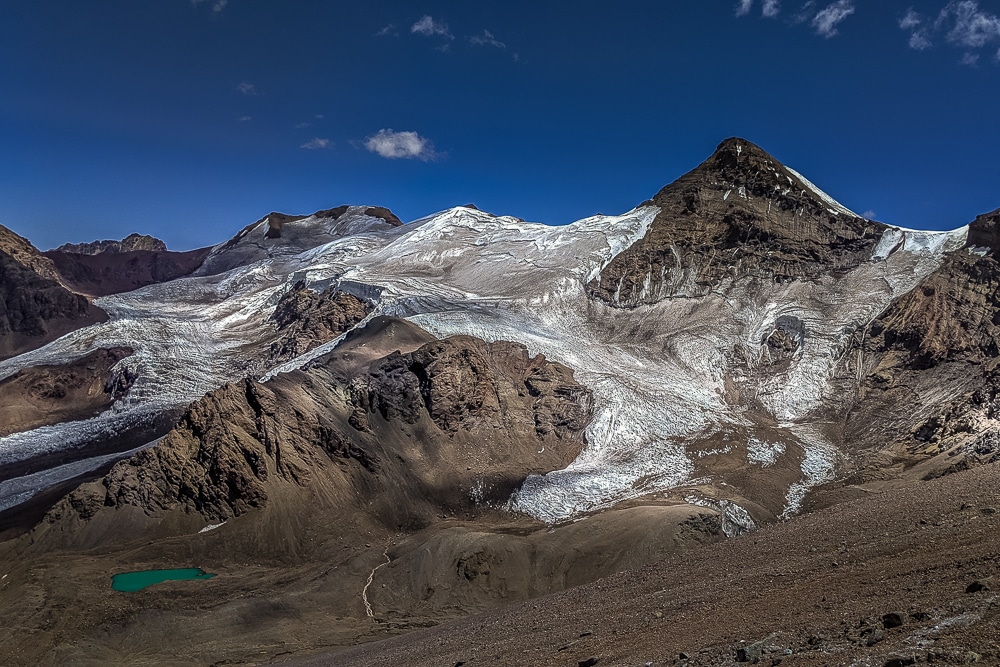
Do I need technical mountaineering skills?
The one saving grace is that Aconcagua does not require any specialist mountaineering skills. It is often referred to as the highest trekking peak in the world.
Climbers will need to wear plastic boots and (probably) crampons and occasionally use an ice axe, but Aconcagua is essentially a non-technical mountain. Any experience of these will be useful.
How does it compare to the other seven summits?
Aconcagua is South America’s highest mountain and one of the seven summits: the seven peaks coveted by climbers who want to reach the highest point on every continent.
It was my third mountain of the seven after Elbrus in Russia and Kilimanjaro in Tanzania and is significantly harder than both.
It is difficult to draw comparisons, but Aconcagua is generally considered to be the second hardest of the seven summits after Everest. This is largely down to its height and the challenges of climbing at such altitude.
Seven summiteer Alan Arnette suggests that Aconcagua has the lowest summit success rate of all the seven mountains – even lower than Everest in the modern era. That said, all the mountains have different challenges.
Denali in North America is known for the cold, Vinson in Antarctica is notoriously inaccessible, Puncak Jaya in Oceania is the most technical and Everest is the highest mountain on the planet.
| Summit | Continent | Altitude | Technical difficulty |
|---|---|---|---|
| Everest | Asia | 8,848m (29,029ft) | Intermediate |
| Aconcagua | South America | 6,961m (22,838ft) | Easy |
| Denali | North America | 6,190m (20,310ft) | Intermediate |
| Kilimanjaro | Africa | 5,895m (19,341ft) | Easy |
| Elbrus | Europe | 5,642m (18,510ft) | Easy |
| Vinson | Antarctica | 4,892m (16,050ft) | Intermediate |
| Puncak Jaya | Oceania | 4,884m (16,024ft) | Advanced |
How did you train for the climb?
I spent most of 2019 preparing for Aconcagua. I upped my gym routine significantly. I spent a lot of time working on cardio (running and swimming) for high-altitude performance. I also worked on my upper body, focusing on my core muscles to improve strength for carrying a backpack.
I went on several long-distance and high-altitude treks in the preceding 12 months. These included the Everest base camp trek in Nepal, the K2 base camp trek in Pakistan and the Arctic Circle Trail in Greenland.
Additionally, I went on numerous local day hikes and multi-day treks carrying over 20kg (44lb) on my back.
What was the hardest part?
The devilish Canaleta scree slope at around 6,700m (21,981ft) on summit day is utterly soul-destroying. The mixture of loose gravel and rocks means for every two steps forward you slide back one. It takes several hours of slipping, sliding and swearing to ascend.
How cold does it get? What is the weather like?
The most predictable feature of the weather on Aconcagua is its unpredictability. Temperatures regularly drop below -20°C (-4°F), but climbers should be prepared for temperatures as low as -30°C (-22°F), particularly at night.
During the day it is often sunny, but no matter how strong the sun and clear the sky, the infamous Aconcagua wind and the hostile chill that accompanies it is never far away. The wind chill factor of Aconcagua is extreme; it can lower temperatures by as much as 15°C (59°F).
It snowed several times during our climb, most heavily on summit day when we had a whiteout. You should be prepared for the same.
When is the best time to climb Aconcagua?
The best time for climbing Aconcagua is from mid-December to the end of January. The climbing season runs from mid-November to the end of March, but the weather is more changeable earlier and later in the season.
Even at the best of times, climbers should be prepared for high winds, snow, ice and low temperatures.
What should I pack?
I’ve put together a detailed Aconcagua gear list. It contains everything I took with me including clothing, equipment, toiletries, medication, electronics and documentation.
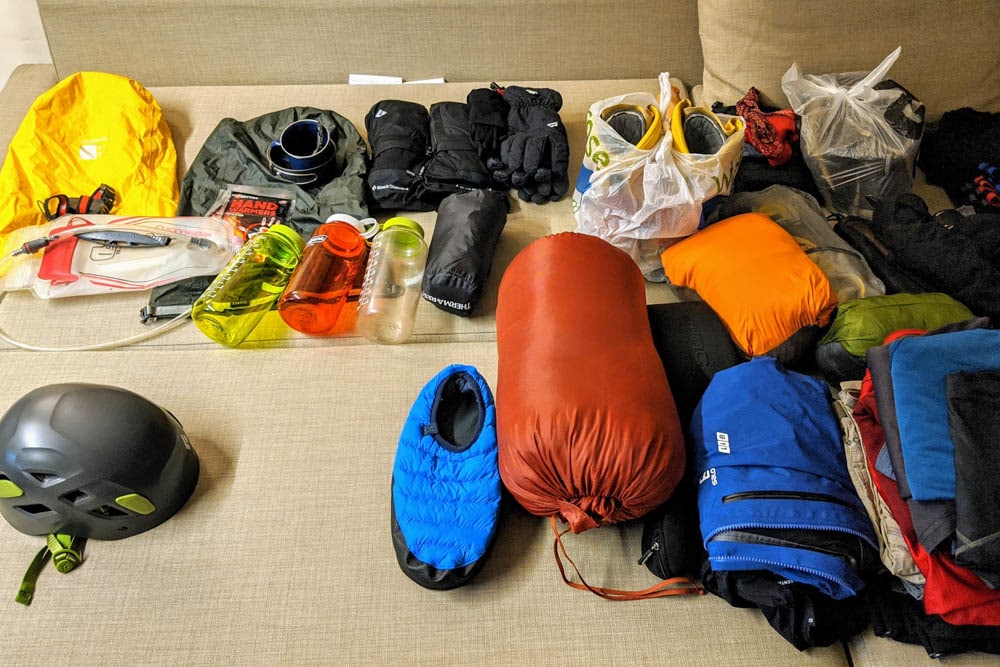
Can I buy/hire trekking gear and clothes locally?
It is possible to rent most items on arrival in Mendoza. However, it’s cheaper in the long run to buy your own gear and it’s also better to have tested everything beforehand, particularly when it comes to footwear and clothing.
Mendoza has several outdoor stores where it’s possible to buy gear. But be warned: outdoor gear is very expensive in Argentina. It’s almost certainly cheaper to buy gear in your home country.
If you’re travelling in South America beforehand, then Chile is a good destination to buy outdoor equipment. My guides told me they take a bus across the border to Santiago to buy theirs.
What is base camp like?
Plaza de Mulas base camp is best described as a sprawling tent town. It houses hundreds of climbers and trekkers and the guides, cooks and porters who assist them up the mountain. Most outfits have a central dome tent for meals and a support tent for cooking surrounded by dozens of tents for their staff and clients.
I was surprised at the size of base camp and the extent of its services. It’s possible to buy drinks (alcoholic and soft), food, cigarettes, hire porters and guides and even visit an art gallery.
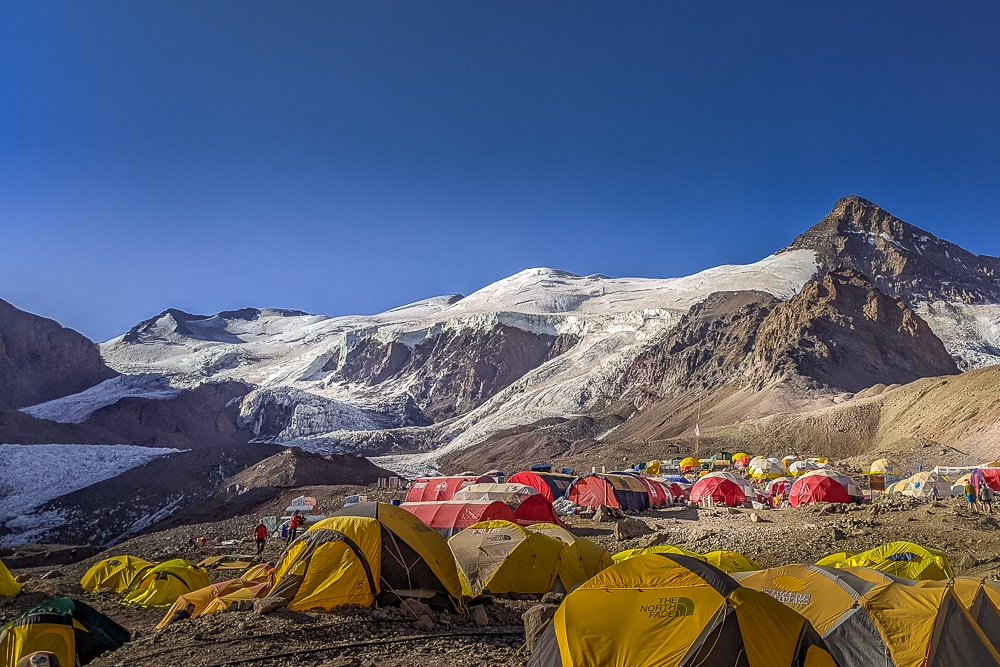
Is there an Aconcagua base camp trek I can do instead?
Yes. We were joined by a trekker who hiked with us to base camp and accompanied the climbing team on the acclimatisation hikes to Plaza Francia and Mt. Bonete.
He was planning to attempt Aconcagua the following year and wanted to gain some high-altitude experience first. Acomara offer several trekking options.
How many camps are there?
There are five camps in total:
- Confluencia: 3,400m, 2 nights
- Base camp (Plaza de Mulas): 4,300m, 6 nights
- Camp 1 (Canadá): 4,950m, 1 night
- Camp 2 (Nido de Cóndores): 5,560m, 2 nights
- Camp 3 (Cólera): 6,000m, 2-3 nights
What time did you get up on summit day?
We woke up at 3am on summit day and left camp at 4.30am. It took us eight hours to reach the summit and four hours to descend.
Summit days regularly last as long as 15 hours, sometimes longer.
Where do you get drinking water?
At Confluencia and base camp, water is supplied by the support team. Pipes run from streams flowing from the glacier. The water is stored in barrels for climbers to help themselves to.
Further up the mountain, guides and climbers have to source their water from the snow by melting it themselves.
At Camp 2, we received reports from Camp 3 that there was little snow above, so each team member transported seven litres of water up to Camp 3 from Camp 2 for cooking our meals and drinking on summit day.
What is the food like?
The food was excellent considering where we were. At Confluencia and base camp, mealtimes were sit-down affairs with great variation.
Typically, breakfast was eggs, bread, biscuits and sausages. Lunchboxes were prepared for us for during the day, usually consisting of a sandwich, chocolate and cereal bars and a piece of fruit. Evening meals always included soup followed by something like lasagna, pasta, noodles, pizza and sometimes even a barbecue.
At the higher camps, food became more basic consisting of bread and cheese for breakfast, comparable lunches and evening meals were usually pre-prepared trekking (dehydrated) meals.
Whatever was on the menu, we never went hungry.
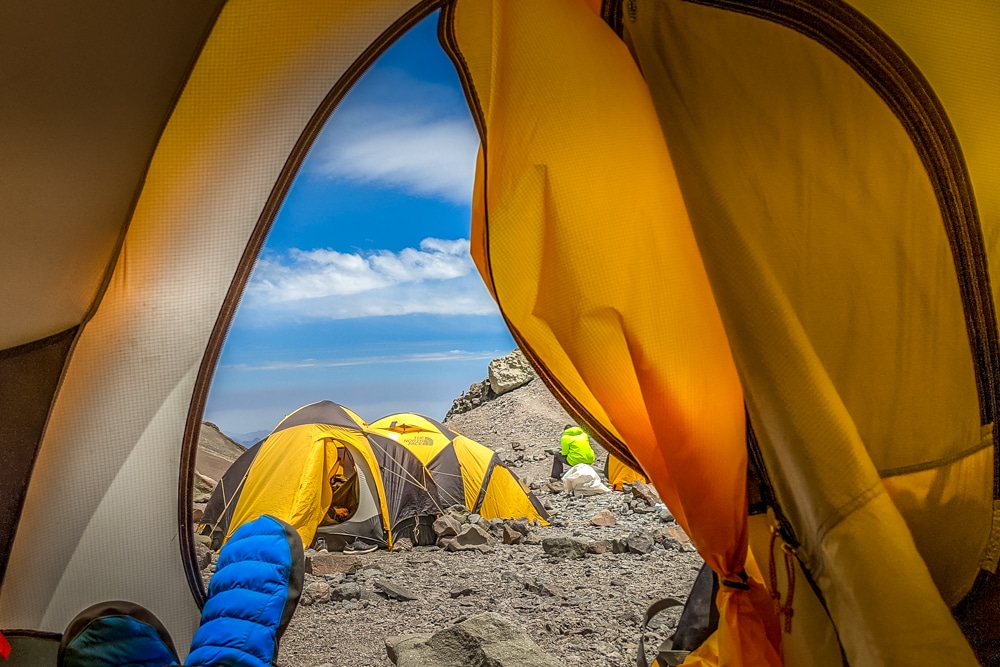
Are meals included in the price?
All meals from leaving Mendoza onwards are included in the price. Climbers may wish to take some preferred snacks or energy gels with them, particularly for summit day.
How do you go to the toilet?
Confluencia and Plaze de Mulas have simple drop-toilet facilities, which invariably become pretty disgusting. However, considering the number of people on the mountain, using the mountainside instead is not viable.
At the higher camps, systems may vary but expect a simple toilet tent to be erected with climbers required to do their business in bin liners. Waste is collected and carried off the mountain by porters and mules.
Please do your utmost to leave no trace whatever system is in place.
Can I take a shower during the climb?
At base camp, it’s possible to take gas-heated showers. One free shower is included in the price of the climb. After that, showers cost $15 USD.
Most climbers (including me) took one shower before leaving base camp for the higher camps. It was utterly delightful.
Is there phone signal or wifi available?
Phone reception is available at base camp, Los Penitentes and in Mendoza. But not at Confluencia or the higher camps. It’s possible to buy local SIM cards in Mendoza.
Can I charge electronics during the climb?
It should be possible to charge devices at the mess tent of your outfitter. This can only be done during the day as they are solar-powered. However, charging points are at a premium and take a long time to charge.
I packed a Powergorilla charger and a Falcon 21 foldable solar charger from PowerTraveller and preferred to use these. They were more powerful, more reliable and functioned in cold temperatures.
The Powergorilla can charge devices up to 24Volts (such as a laptop). I used the solar charger most days as it was reliable enough to charge my smaller devices.
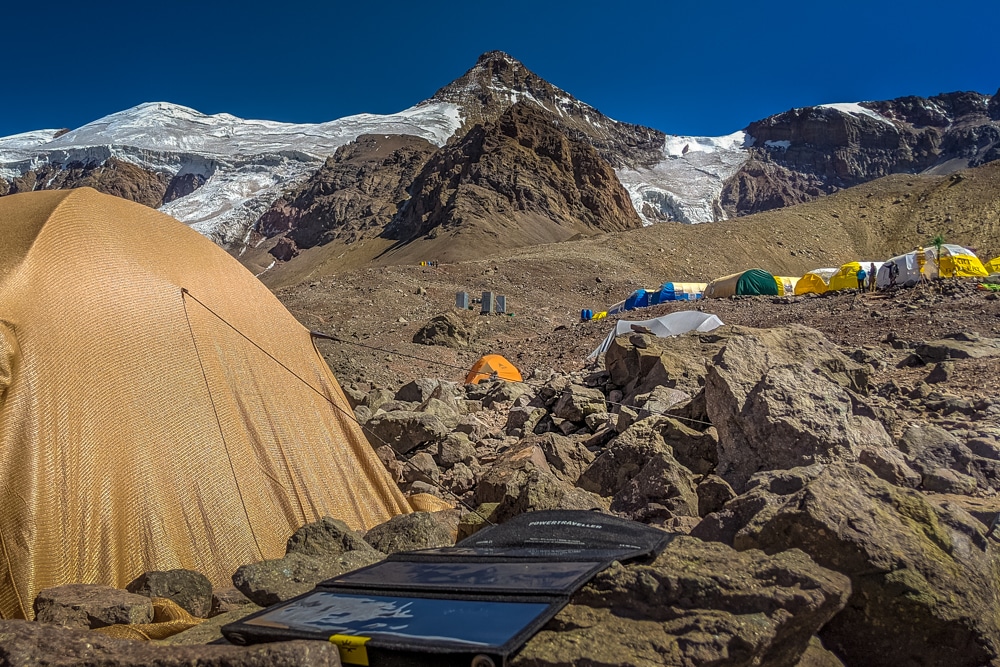
Are there any medical facilities or checks?
At Confluencia and base camp there are medical tents where every climber must attend a basic medical check. Doctors stationed here measure blood pressure and oxygen saturation. Anyone who fails these tests will not be allowed to climb further.
Additionally, there are helipads at base camp and Camp 2 for evacuations.
Is climbing Aconcagua dangerous?
In a word, yes, but Aconcagua is a relatively safe climb by the standard routes. However, it is a massive mountain and people die on it every year. I witnessed medical evacuations every day of the climb and the first death of the season happened shortly after I left the mountain.
The main hazards are altitude sickness and exhaustion and exposure, although rockfall and avalanche are also dangers.
Do I need specialist insurance?
One of my most important tips on how to climb Aconcagua is to make sure you select a travel insurance policy that has sufficient medical coverage. It must have a minimum coverage of $250,000 USD for repatriation and emergency rescue (including search and rescue) and helicopter evacuation.
I bought mine from TrueTraveller. For Aconcagua you’ll need the Extreme Adventure Pack as it covers trekking over 4,600 metres.
Should I take Diamox?
This is very much down to the individual. I have never taken Diamox, but I have been to high altitudes several times so I know what to expect. I do carry some with me in case I ever feel particularly bad.
The best advice I can give is what my guide gave me on my Everest base camp trek. Have some Diamox with you and take it as soon as you start to feel the pulsing headaches that are synonymous with altitude sickness.
He said it’s good to have some available at the higher altitudes – particularly when you sleep above 5,000m – so you can use it to aid a good night’s sleep.
What maps or guidebooks do I need?
Cicerone’s Trekking Aconcagua and the Southern Andes is the best guidebook available. The book covers two popular trekking routes: the Normal Route and the Polish Glacier Route.
If you are climbing Aconcagua unguided then the more detailed Aconcagua Climbing Map is essential.
Which route did you take? Are there others?
I climbed via the Normal Route. The other popular route is via the Polish Glacier. The Polish Glacier is longer and harder, but more scenic. Both are trekking routes. There are other routes to the summit but they require mountaineering skills and are generally unsupported.
About 54% of climbers ascend the Normal Route, 43% up the Polish Glacier Route and the remaining 3% on other routes.
Do I need a permit?
All climbers require a climbing permit which must be obtained beforehand from the Ministerio de Turismo in Mendoza.
The climbing permit currently costs between $730-$1,140 USD depending on the route and time of year. The most recent price list can be downloaded from the park’s website.
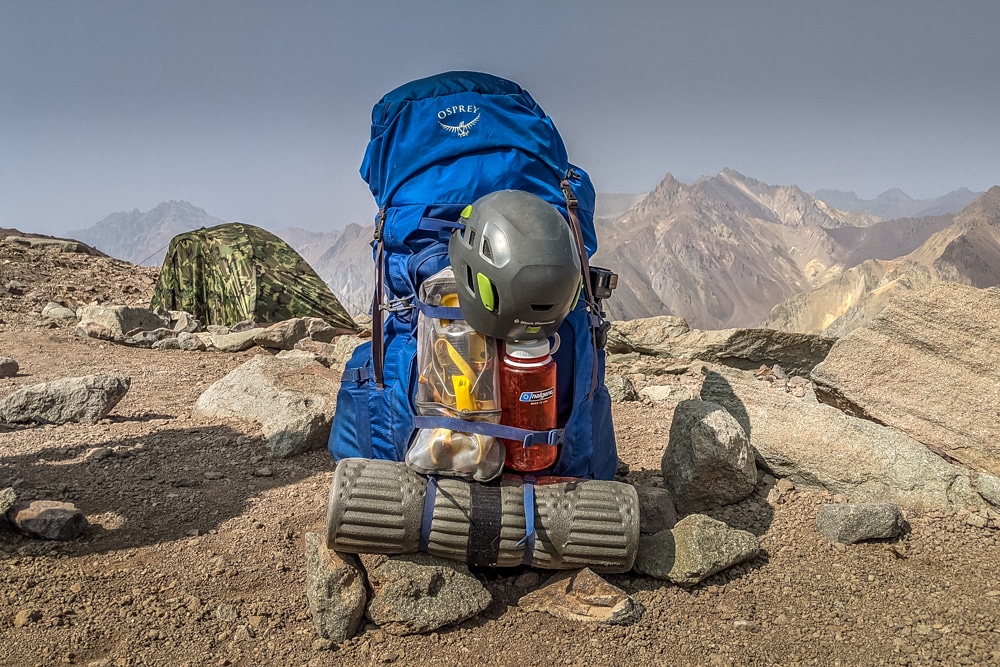
What will the porters and mules carry for me?
From the park entrance to Plaza de Mulas, mules carry climbers’ heavy duffle bags, which contain the vast majority of their gear. Climbers will only be responsible for carrying their daypacks.
Beyond base camp, the team employs porters to aid with carrying the tents and cooking equipment. However, climbers are responsible for hauling their personal gear and food up to the higher camps.
From base camp to Camp 1, climbers transport their gear and food in two carries of around 12-15kg (26-33lb) at a time.
Carries from Camp 1 to 2 and from Camp 2 to 3 are done in one load (20-25kg/44-55lb).
It is possible to hire porters who will carry up to 20kg (44lb) between the higher camps. These become more expensive the higher you get:
- Base camp to Camp 1: $130 USD
- Camp 1 to Camp 2: $170 USD
- Camp 2 to Camp 3: $260 USD
How much should I tip guides and porters?
Guides and porters on Aconcagua are paid much better than their counterparts in many other parts of the world – Nepal, Pakistan and Tanzania for example – so tips are not expected to make up part of their income.
That said, showing your appreciation in the form of a tip will go a long way. Allow between $100-200 in tips for your guides, assistants and porters.
How many people climb Aconcagua? Is it busy?
Like most mountains, summit statistics are hard to come by. Park rangers do not maintain records, but we do have access to some statistics of how many people enter the park in recent years.
During the 2015/16 season, 5,551 people entered the park between November and March. Previous seasons have seen as many as 7,000. More figures on visitor numbers can be found here.
This area of Argentina enjoys well-established infrastructure and is not what would be described as remote. That said, the mountain is by no means overcrowded and sees a tiny fraction of the visitors the trails around Everest or Annapurna do in Nepal. The main camps are busier of course, but the trails are generally quiet.
How did you get to Mendoza?
I flew to Mendoza via Santiago in Chile from the UK with British Airways and LATAM. It is possible to fly via Buenos Aires in Argentina, but this often involves changing airports. I use Skyscanner to find the best prices.
I had a long stopover in Santiago so took advantage of the Primeclass Pacifico Andes Lounge inside the international terminal – a godsend after the 14-hour flight from London.
The lounge includes a buffet restaurant, hot and cold drinks, shower and washroom facilities and a business area. Prices start at $50 USD for international passengers.
Enjoyed this post? pin it for later…
Have we missed any anything? If you have any of your own questions or suggestions on how to climb Aconcagua, please contact us.
